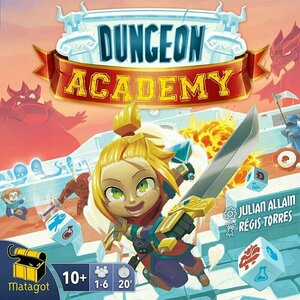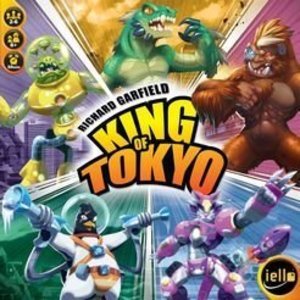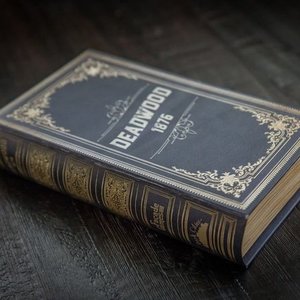
Deadwood 1876
Tabletop Game
There’s gold in the Black Hills of South Dakota, and you’ve come to find (or steal) your share....
Boardgames PartyGames WesternGames 2018Games
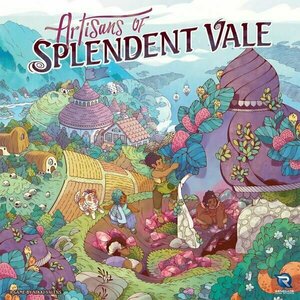
Artisans of Splendent Vale
Tabletop Game
Long ago, a splendid streak of crimson fell from the sky and carved the valley from the earth. The...
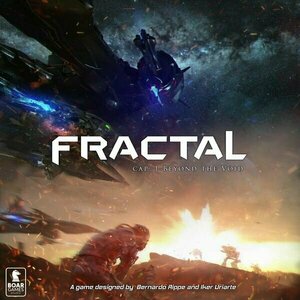
Fractal: Beyond the Void
Tabletop Game
Fractal: Beyond the Void is redefining the 4X genre with an expansive and dynamic strategy game in...

Wonder Book
Tabletop Game
Oniria — the world of an ancient dragon civilization. Tales describe the land as an idyllic...
Purple Phoenix Games (2266 KP) rated MechaTop in Tabletop Games
Jul 2, 2020
Disclaimer: We were provided with a PnP version of this game for the purposes of this preview. Please excuse my lack of a color printer, and rest assured that the cards are colorful and eye-catching. The rulebook we have is not the finalized version, but rather an up-to-date draft detailing the overall rules and gameplay. Some changes will probably take place during the Kickstarter campaign, so the finalized game system might have some differences to this preview. For more details, check out the publisher’s website! -L
MechaTop is a tabletop wargame system in which players pilot large Mecha suits and battle their opponents. To begin a game, you must first decide which game mode you want to play. After selecting the game mode, players create their Mecha teams for battle. Each game mode has an associated cost score limit – the highest maximum cost you can spend on your team. For example, a Mecha suit might cost 300, and the cost score limit for the chosen mode is 600, leaving you with 300 to spend on upgrade cards for your suit. Once all players have chosen and upgraded their Mecha suits, those corresponding cards are placing in their play area. Everyone then selects a Pilot card to be assigned to their Mecha suit, and receives a set of Button tokens and a secret Twist card (kept secret until played at any time during the game). Decide which weapons to equip on your suit for the start of the game, roll a d6, and take turns placing your Mecha in the playing field in ascending numerical order of the die rolls. You are officially ready to start the game now!
Each round begins with the Instinct Phase, where players decide which 2 Button tokens they want to play this round. The Button actions are: Attack, Movement/Rotation, Change Weapon/Reload, and possibly Telekinesis. After the Buttons have been selected, they are placed face-down on the playing field next to their corresponding Mecha suit. Next is the Initiative Phase, in which all players roll a d6 and the player who rolled the highest gets to act first in the round. On your turn, you may choose to activate 1 Button token, activate both Button tokens, or declare No Action and pass your turn. Choosing to activate only 1 Button allows you to perform a simple action, but activating both at the same time in certain combinations allows you to perform a more powerful type of the corresponding action. Choosing to do No Action allows you to keep both Button tokens facedown. The benefit to leaving either 1 or both Button tokens facedown is that you can then use them as reactions during an opponent’s turn. Let’s say an opponent tries to Attack you – if you have your Movement Button still at your disposal, you can use it to attempt to dodge the hit and negate that damage. If you don’t use a Button in that situation, or don’t have one left face-down, all the damage goes straight through on your suit, thus bringing you closer to losing the game. Be warned – some actions are automatic, but some are resolved by dice rolls, so you better hope luck is on your side! After all players have had a turn in Initiative Order, a new round begins with another Instinct Phase. Play continues in this manner until the win condition of the selected game mode has been met, and the winner is deemed victorious!
First and foremost, I think one of the coolest things about the MechaTop system is that it can be played using ANY mecha models, action figures, or standees that you choose. In my childhood, Transformers made up a decent amount of our household, so it’s neat that I am able to bring those back out again after all these years. The nostalgia is great in that sense, and it makes the game more enjoyable. Also along those lines, the game will come with blank Mecha and Pilot cards for you to create your own – the rulebook has a section dedicated to stat card creation. It’s a neat element that lets you add a personal twist to your game, and lets you sit in the pilot’s seat (see what I did there?) to make the game truly your own! In the team creation step, players also have the opportunity to buy Upgrades for their suits, and that gives you additional control over your game. You can create so many different combinations of Upgrades that keep each game unique and entertaining.
The overall game flow is pretty nice. The rounds are logical, and the Button tokens add a unique element of strategy that takes this game to the next level for me. Do you forego doing a special action this turn and save a Button token in case an opponent tries to attack you? Or are you willing to risk damage to your Mecha suit in order to execute the exact plan that you want? The Button tokens take MechaTop beyond a simple attack-and-defend wargame and incorporates strategy to help balance out the randomness of Initiative rolls. The Twist cards are a nice touch as well, because if played at the right time, they could literally turn the battle around for you! No matter how good your strategy is, however, all offensive/defensive actions are dictated by dice rolls. So there’s a bit of a luck element embedded in this game as well. You have to be able to adapt your strategy on the fly depending on how your die results are turning out!
There is a bit of a learning curve to this game that can make it seem daunting at first. Different actions require a different number of dice to roll, and knowing what results counts as a success or failure is not always easy to remember. Incorporating a Player Reference Sheet would eliminate some of the confusion, but it does get easier to remember the more you play the game. Probably the biggest drawback of the system for me is that there is no set game board or movement system. The rulebook details movement speeds and weapon ranges based on different scales of models you might use, but that honestly just went right over my head. Providing a set of bases for models, as well as a hex-grid board would take out that guess-work for players and make it easier to visualize movement and range. And that would help keep the game flowing smoothly because players would not have to spend time measuring distances across the play area.
Let’s talk components. As I mentioned earlier, we only have a PnP copy of MechaTop, so admittedly our components are not the best. That being said, the finalized game should be coming with nice colorful cards, sturdy cardboard tokens, and good quality dice. Don’t let my drab version keep you from checking out the game on BGG or its own website!
All in all, MechaTop is a wargame system that I can see myself playing again. The gameplay itself is straight-forward and simple to grasp, but the strategic elements incorporated with Button tokens, Twist cards, and Upgrades ensure that you will never play the same game twice. If you’re looking to get into wargame systems, or are just looking for a unique wargame setting, definitely check out the MechaTop Kickstarter when it goes live later this month!
Purple Phoenix Games (2266 KP) rated Dungeon Academy in Tabletop Games
Dec 8, 2020
In Dungeon Academy players are taking the roles of students attempting their finals to become graduated warriors and mages in the land. They must pass their tests though, and that entails surviving through the dreaded Dungeon four times and surpassing all opponents to receive their degree.
DISCLAIMER: We were provided a copy of this game for the purposes of this review. This is a retail copy of the game, so what you see in these photos is exactly what would be received in your box. I do not intend to cover every single rule included in the rulebook, but will describe the overall game flow and major rule set so that our readers may get a sense of how the game plays. For more in depth rules, you may purchase a copy online or from your FLGS. -T
To setup a solo game of Dungeon Academy, assemble the Dungeon component per the instructions. The player is dealt a character card with a special ability and markers to track Health and Mana throughout the game. Pile the Health and Mana tokens on the table, shuffle the Loot cards into a deck, and place the Teacher pawn nearby. Grab the pad of paper and pen and you are ready to begin.
Each attempt in the Dungeon will require the 16 Base Dice to be rolled and set inside the Dungeon. It is then flipped upside down when the timer begins and the mad dash to the Exit commences. As the player marks a line through every “room” (each die is considered a “room” in the Dungeon) they create a path to be checked at the end of the round. Once the player has made it through the Dungeon satisfactorily the Teacher will check the path.
The Teacher pawn is now used to track movement in the Dungeon. As the player tracks the path they drew on the paper, the Teacher is moved through the rooms. In each room (each die face) will be one of these possible encounters: a Mana potion to refill an empty Mana space on the character card, a Health potion, a small red Blob, a small blue Ghost, a large red Colossus, or a large blue Reaper. Each small foe encountered will be overtaken by spending one Health or Mana token from the character card. Each potion will restore spent Health or Mana. Each large foe encountered will require two Health or Mana to be spent. As the Teacher follows the path set by the player, Health and Mana will be spent and replenished on the character card, and foes defeated tracked on the sheet.
Once complete, the player will add up all the points from defeated foes (1VP per foe) and any VP from special character abilities or Loot cards. Additionally, the player will choose one of the four Quests at the bottom of the sheet to score each round for extra VP. They write these numbers on the sheet and prepare for the next level. After four total levels the game ends and the total is compared to a scale in the rulebook.
Multiplayer Dungeon Academy works the exact same way except once a player exits the Dungeon, they must grab the lowest-numbered Exit card as representation of the place finished in the Dungeon (so the first one out grabs the 1 card, etc.). The other difference from solo play is that players all compare total VP at the game end to determine the winner.
Components. This game has a large scorepad of 150 double-sided sheets, a bunch of cards for Hero characters, Loot, and Exits, as well as 18 total dice, about a trillion double-sided Health/Mana tokens and an impressive cardboard Dungeon. Everything is of wonderful Matagot quality… except for the Duneon. In my copy the Dungeon does not stay together very well. I may attempt some glue to keep the parts down that need to stay down, but it is still functional and a great design. The art style across the game is cute and fun, and I like the muted bright color scheme. That feels so weird to say/type, but the colors are vibrant hues, but muted so they stay out of the way. It’s strange and I love it.
Speaking of I love it, I love this game! It is quickly becoming one of my favorite roll-and-write games, and I can play it solo. In about 15 minutes. These are all positives, and I haven’t even really touched on the gameplay. Being able to get through a light solo game in 15 minutes while having a great time throughout is an achievement, and one I would like to applaud here. I wasn’t really sure going into this if I was going to enjoy it, but it has blown me away. Trying to evaluate the best path through the Dungeon while keeping track of how the Health and Mana is always in flux gives my brain a welcomed workout that is just a breath of fresh air for me. I love the art style and the theme, and the simple but easy to understand iconography on the dice is much appreciated.
I think that if you are looking for or lacking a similar type game in your collection you should do yourself a favor and check out Dungeon Academy. It is super quick, easy to grasp and play, requires little table space, and is simply a great time alone or with your gamer friends and family. I know I am going to be tracking lots of plays with this one. I am going to have to find a place on my shelves at eye-level because I don’t want it to be overshadowed down at foot-level.
If you already enjoy roll-and-write games and want something a little different with a great theme, or you don’t have any roll-and-writes and want to check one out for the first time, or you simply cannot get enough games featuring great art about wizards in school check this one out. I recommend it.
Rikki Hammond (33 KP) rated King of Tokyo in Tabletop Games
Jun 4, 2019
King of Tokyo is one of the first games I bought for myself, when I got back into board gaming years ago, and it's definitely a fantastic light filler game, that will appeal to all ages.
Players choose a monster, and then take it in turns rolling six custom dice up to three times (like Yahtzee,) to either attack other players, heal their own health, gain 1,2 or 3 victory points, or collect energy.
Once one player attacks another, they enter Tokyo, and gain an extra victory point for each turn they are in there, however, everyone else can attack you, and you can't heal, but your attacks hurt everyone else to counteract this. You can decide to exit Tokyo, which will put the last player who attacked you in there instead.
Energy is used to buy special cards that help you out in one way or another. This can be anything from allowing you to roll an additional die, to giving you an extra life if you are destroyed. Each card has a different energy cost to buy them, and generally the better cards cost more, although some cards cost very little, but can be very overpowered, which can throw a little imbalance in the game.
A player wins by either destroying all other monsters, or by gaining 20 victory points (although it's usually the former that occurs.)
King of Tokyo is a lot of fun, but sometimes the games can be over far too quickly, especially if someone gets lucky with the attack rolls and card purchases, and sometimes players can be eliminated early on, leaving them to sit and watch as the rest of the game is played.
Overall, I would recommend King of Tokyo to casual gamers, and those starting out in gaming, especially those with kids, as it's light, easy to teach, and fun to play.

Excel Data Analysis For Dummies
Stephen L. Nelson and E.C. Nelson
Book
Want to take the guesswork out of analyzing data? Let Excel do all the work for you! Data...

Pro Power BI Desktop: 2016
Book
This book shows how to deliver eye-catching Business Intelligence with Microsoft Power BI Desktop....
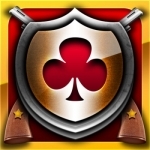
Texas Hold'em for iPad
Games and Entertainment
App
★★★ Start your poker career and hone your skills in 7 amazing casinos with online multiplayer...

